The Association of College Honor Societies (ACHS) is a predominantly American, voluntary association that serves a number of functions with respect to national collegiate and post-graduate honor societies. ACHS coordinates member organizations, facilitates communications between them, and provides both scholarships and an outlet for publication to members through its member organizations. ACHS member societies undergo periodic audits to validate their adherence to ACHS standards and their qualification for membership and ACHS certification.
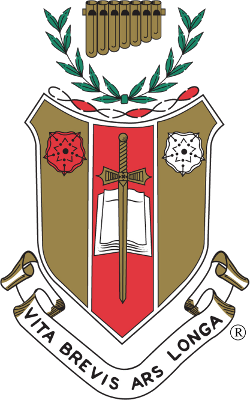
Sigma Alpha Iota (ΣΑΙ) is a women's music fraternity. Formed to "uphold the highest standards of music" and "to further the development of music in America and throughout the world", it continues to provide musical and educational resources to its members and the general public. Sigma Alpha Iota operates its own national philanthropy, Sigma Alpha Iota Philanthropies, Inc. Sigma Alpha Iota is a member of the National Interfraternity Music Council and the Professional Fraternity Association.

Alpha Phi International Women's Fraternity is an international sorority with 172 active chapters and over 250,000 initiated members.
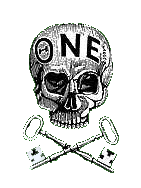
Theta Nu Epsilon is a sophomore class society. Founded at Wesleyan University in 1870 as a chapter of Skull and Bones, the society accepts members regardless of their fraternity status.

Sigma Lambda Upsilon (ΣΛΥ) or Señoritas Latinas Unidas Sorority, Inc. is a Latina-based sorority founded on December 1, 1987 at Binghamton University. The organization was created to promote academic achievement and serve the Latino community and the campuses that Sigma Lambda Upsilon serves. The sorority is now present in over 65 campuses. Though Latina-based, Sigma Lambda Upsilon Sorority, Inc. is a non-discriminatory organization. The sorority is a member of the National Association of Latino Fraternal Organizations (NALFO) and is its fourth oldest sororal member by founding date.
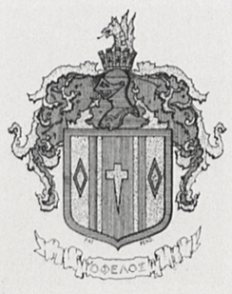
Theta Upsilon Omega (ΘΥΩ), was a national collegiate fraternity in the United States. Representatives of several local fraternities at a December 1, 1923 meeting of locals, organized by the National Interfraternity Conference, determined to form a new national through amalgamation, resulting in the creation of Theta Upsilon Omega on May 2, 1924.
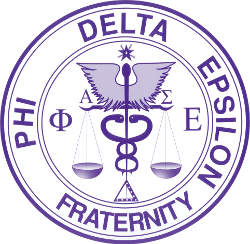
Phi Delta Epsilon (ΦΔΕ) is a co-ed international medical fraternity founded at Cornell Medical College and a member of the Professional Fraternity Association.
The North American fraternity and sorority system began with students who wanted to meet secretly, usually for discussions and debates not thought appropriate by the faculty of their schools. Today they are used as social, professional, and honorary groups that promote varied combinations of community service, leadership, and academic achievement.
This article describes smaller collegiate sororities created in the nineteenth century and early to middle twentieth century on campuses in the United States and Canada. These sororities are defunct. Individual chapters may have affiliated with National Panhellenic Conference (NPC) sororities.
Phi Omega Pi (ΦΩΠ) was a national collegiate sorority operating in the United States from 1922 until 1946 when its chapters were absorbed by several larger sororities, and merged with the national sorority, Delta Zeta.

Delta Theta Phi (ΔΘΦ) is a professional law fraternity and a member of the Professional Fraternity Association. Delta Theta Phi is the only one of the two major law fraternities to charter chapters (senates) in the United States at non-American Bar Association-approved law schools. Delta Theta Phi can trace its roots to Delta Phi Delta on September 15, 1900 at the then-named Cleveland Law School, now Cleveland-Marshall College of Law in Ohio. Delta Theta Phi has initiated more than 138,000 members across the country and in several other nations.

Washington & Jefferson College is host to 8 Greek organizations and a significant percentage of the undergraduate student body is active in Greek life. With 43% of women and 40% of men of the student body participating in "greek life," fraternities and sororities play a significant role in student life at W&J. The Princeton Review named Washington & Jefferson College 12th on their 2010 list of "Major Frat and Sorority Scene" in the United States. As of 2021, the Office of Fraternity & Sorority Life recognized 4 fraternities, Alpha Tau Omega, Beta Theta Pi, Delta Tau Delta, and Phi Kappa Psi, and four sororities, Delta Gamma, Kappa Alpha Theta, Kappa Kappa Gamma, and Pi Beta Phi. The fraternities are governed by a local Interfraternal Council and the sororities are governed by a local Panhellenic Council, while the Greek Judiciary manages broad policy violations at the chapter-level. All Greek organizations occupy College-owned houses on Chestnut Street on campus. All members of fraternities and sororities must pay the $100 "Greek Membership Fee," a levy designed to fund leadership seminars and other educational events for Greeks.

Fraternities and sororities at the University of Virginia include the collegiate organizations on the grounds of the University of Virginia in Charlottesville, Virginia. First founded in the 1850s with the establishment of several fraternities, the system has since expanded to include sororities, professional organizations, service fraternities, honor fraternities, and cultural organizations. Fraternities and sororities have been significant to the history of the University of Virginia, including the founding of two national fraternities Kappa Sigma (ΚΣ) and Pi Kappa Alpha (ΠΚΑ).
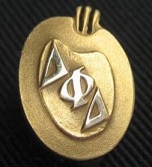
Delta Phi Delta (ΔΦΔ) is a national art honorary society. Organized as the Palette Club on January 10, 1909 at the University of Kansas, it was renamed Delta Phi Delta on 28 May 1912. The society is open to men and women. Its official magazine, the Palette, started publication in 1911.

Delta Psi Kappa (ΔΨΚ) was an American professional fraternity in the disciplines of health and physical education, health sciences, and recreation that was established in 1916.

Kappa Beta Pi (ΚΒΠ) is a Legal Association which was formerly a professional law sorority in the United States.

Sigma Delta Kappa (ΣΔΚ) is a Professional Fraternity in the field of Law. It was founded in 1914 at the University of Michigan Law School.

Phi Epsilon Kappa (ΦΕΚ) is a national professional fraternity for persons engaged in or pursuing careers in the fields of physical education, health, recreation, dance, human performance, exercise science, sports medicine and sports management.















